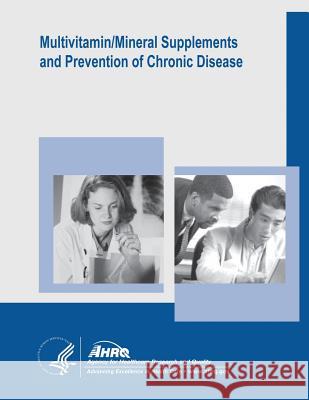Multivitamin/Mineral Supplements and Prevention of Chronic Disease: Evidence Report/Technology Assessment Number 139 » książka
Multivitamin/Mineral Supplements and Prevention of Chronic Disease: Evidence Report/Technology Assessment Number 139
ISBN-13: 9781500374303 / Angielski / Miękka / 2014 / 338 str.
Multivitamin/Mineral Supplements and Prevention of Chronic Disease: Evidence Report/Technology Assessment Number 139
ISBN-13: 9781500374303 / Angielski / Miękka / 2014 / 338 str.
(netto: 113,52 VAT: 5%)
Najniższa cena z 30 dni: 111,47 zł
ok. 13-18 dni roboczych
Dostawa przed świętami

Darmowa dostawa!
Multivitamin/mineral supplements are the most commonly used nutritional supplements in the United States. Scientific evidence on the efficacy and safety of supplement use will serve as the basis for us to identify knowledge gaps and inform the general public's practice and future research. This report synthesizes the published literature on the efficacy and the safety of multivitamin/mineral supplements in the prevention of chronic disease for the general population of adults, and on the efficacy and the safety of certain commonly-used single vitamin or mineral supplements in the general population of adults and children. The specific aims of this review are to synthesize evidence in the literature for addressing the following Key Questions: 1. What is the efficacy determined in randomized controlled trials of multivitamin/mineral supplements (defined as 3 or more vitamins and/or minerals without herbs, hormones, or drugs), each at a dose less than the tolerable upper intake level (UL) determined by the Food and Nutrition Board, in the general adult population for prevention against the development of one or more of the following chronic diseases or conditions? a. Oncologic: breast cancer, colorectal cancer, lung cancer, prostate cancer, gastric cancer, or any other malignancy (including colorectal polyps) b. Cardiovascular: myocardial infarction, stroke c. Endocrine: type 2 diabetes mellitus d. Neurologic: Parkinson's disease, cognitive decline, memory loss, dementia e. Age-related sensory loss: cataracts, macular degeneration, hearing loss f. Musculoskeletal: osteoporosis, osteopenia, rheumatoid arthritis, osteoarthritis g. Gastroenterologic: non-alcoholic steatorrheic hepatitis, non-alcoholic fatty-liver disease h. Renal: chronic renal insufficiency, chronic nephrolithiasis i. Infectious: HIV infection, hepatitis C, tuberculosis j. Pulmonary: chronic obstructive pulmonary disease 2. What is known about the safety of use of multivitamin/mineral supplements (as defined in question 1) in the general population of adults and children, based primarily on data from randomized controlled trials and observational studies? 3. What is the efficacy determined in randomized controlled trials of supplementation with the single nutrients or functionally related nutrient pairs listed below, each at a dose less than the UL determined by the Food and Nutrition Board, in the general adult population for prevention against the development of one or more of the chronic diseases or conditions listed above for question 1? a. calcium b. folic acid c. vitamin B6 d. vitamin B12 e. vitamin D f. vitamin E g. vitamin C h. vitamin A i. iron j. zinc k. magnesium l. vitamin B1 m. vitamin B2 n. niacin o. calcium/vitamin D p. calcium/magnesium q. folic acid/vitamin B12 r. folic acid/vitamin B6 4. What is known about the safety of use of the following single nutrients in the general population of adults and children, based primarily on data from randomized controlled trials and observational studies? a. calcium (with or without vitamin D) b. folic acid c. vitamin D d. vitamin E e. vitamin A f. iron g. selenium h. beta-carotene











